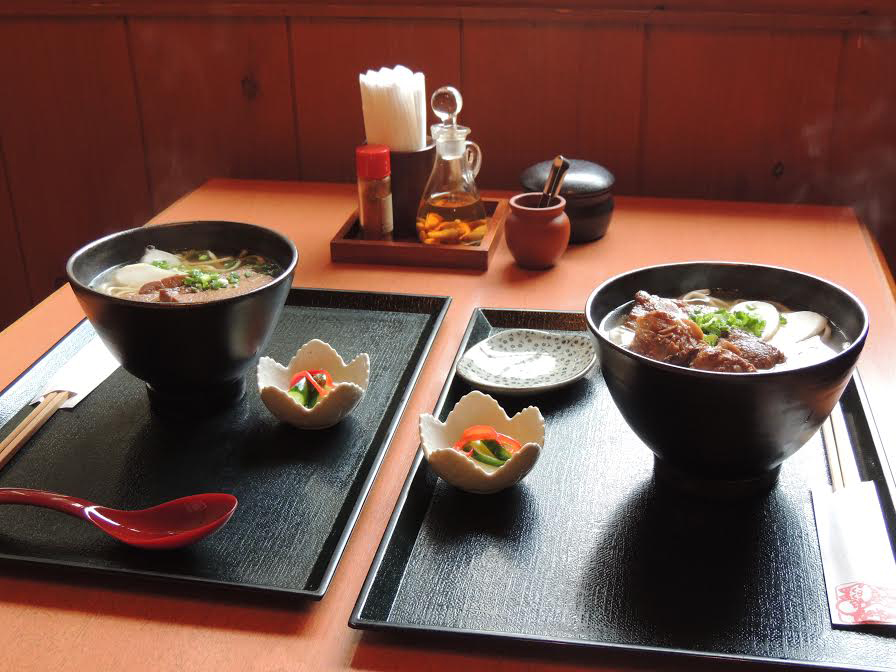The history of Okinawa soba is murky at best. A common story is that the dish originated when Chinese dignitaries presented it at the 49-day memorial service for the king of Ryukyu Islands, Sho Shin, in 1543. The fact that Sho Shin died in 1526 discredits this account, though there is evidence that flour was introduced to Okinawa by chefs from present-day Fujian Province, China, while accompanying a Chinese ambassador in 1534. Another, generally more accepted story attributes the creation of Okinawa soba to yet another Chinese chef, this one upon opening a restaurant in Naha during the Meiji Era (1868-1912).
Whatever the true origins of Okinawa soba may be, what is certain is that after Okinawa reverted to Japanese administration from U.S. control in 1972, the dish's use of the soba moniker prompted a trademark imbroglio that eventually resolved on Oct. 17, 1978, when the Japanese Fair Trade Commission officially recognized Okinawa soba as distinct from soba on mainland Japan. Ever since then, Oct. 17 has been known as "Okinawa Soba Day," and hundreds of restaurants around the prefecture celebrate with deep discounts or special promotions.
Okinawa soba is distinct because it uses 100 percent wheat flour, whereas mainland soba is made with buckwheat. Okinawa soba is therefore closer in flavor, texture and consistency to udon, another wheat-flour noodle. What udon lacks, however, is Okinawa's celebrated and mineral-rich sea salt, which is sweet and calcic thanks to the coral reefs that ring the Ryukyu archipelago. Okinawa produces more sea salt per square kilometer than any other prefecture in Japan, and the scores of local varieties and methods of production are just one factor separating good Okinawa soba from the truly great.


















With your current subscription plan you can comment on stories. However, before writing your first comment, please create a display name in the Profile section of your subscriber account page.